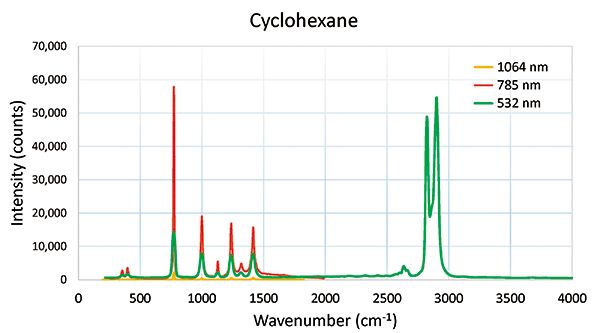Wasatch Photonics
Company Description
Wasatch Photonics creates products that redefine the limits of compact spectroscopy. We're fascinated by the many ways light can be used to understand nature and solve the problems that touch our lives each day. Our products expand the boundaries of what diode-array spectrometers can do (not your budget)-delivering 10x more signal, lower limit of detection, and faster measurements in a compact footprint. Every aspect of our spectrometer designs has been optimized to maximize throughput and minimize noise, from low f/# inputs to near diffraction-limited transmissive optics and our own patented broadband, high efficiency gratings. Whether for research, field use, or OEM integration, we can develop a system perfectly tuned to your application.

Chief Spectroscopic Techniques Supported
- Raman spectroscopy
- NIR spectroscopy
- Fluorescence/photoluminescence
- Absorbance, transmission, and reflectance
- UV-VIS-NIR
Markets Served
- Research & development
- Biomedical, chemical & pharmaceutical
- Process monitoring & quality control
- Homeland security & anti-counterfeiting
- Environmental monitoring
- Semiconductor & materials science
- OEM manufacturing
Major Products/Services
Raman: Clearer, faster spectra at more excitation wavelengths than anywhere else: 405, 532, 638, 785, 830, & 1064 nm.
NIR: Superior sensitivity and SNR for rapid measurements, 900–2500 nm. Superb thermal stability and linear absorbance below 0.1 AU.
Fluorescence: Picomolar limit of detection for benchtop fluorimeter sensitivity in a fraction of the footprint.
VIS-NIR: High efficiency and low stray light from 400–1100 nm, ideal for low light applications, kinetics monitoring, and high-throughput quality control.
Full Configurability: All products offered as fiber coupled/free-space spectrometers or integrated systems; choice of slit size and detector cooling. Custom gratings available upon request for OEMs.

Facility
Wasatch Photonics' Durham, North Carolina, facility serves the spectroscopy and OCT markets, and is ISO 9001:2015 certified. Our patented and proprietary VPH gratings are developed and manufactured in Logan, Utah.

Wasatch Photonics
Systems Division
4022 Stirrup Creek Drive, Suite 311
Durham, NC 27703
TELEPHONE
(919) 544-7785
E-MAILinfo@wasatchphotonics.com
WEB SITEwasatchphotonics.com
NUMBER OF EMPLOYEES
80
YEAR FOUNDED
2002
